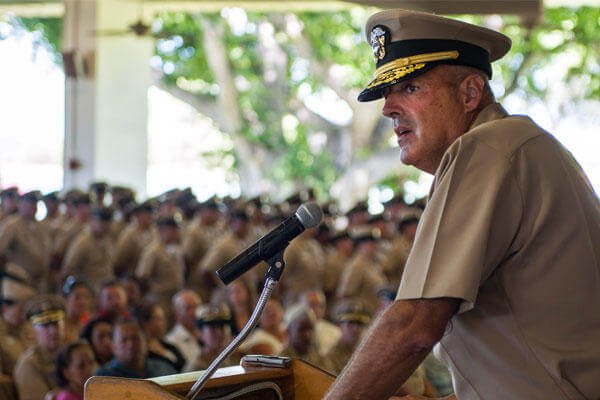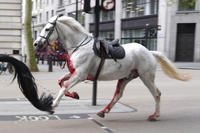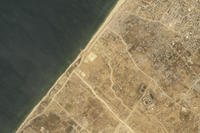Navy brass are meeting now to prioritize development of unmanned technology for the fleet, the Navy's first-ever director of unmanned weapons systems said Friday.
Rear Adm. Robert Girrier, who assumed his newly created post last fall, told an audience at the Center for Strategic and International Studies that the first projects for the directorate would in part be determined by sailors themselves.
"We put out a data call to the fleet. What are your primary gaps that you've got, needs that you think unmanned systems could help out in, please rack and stack those," Girrier said. "I got them before Christmas."
Already, Girrier said, a perspective is developing on where his directorate can speed up technology development and get gear to the fleet even faster. Officials are looking to match rapidly developing new payloads -- decoys, sensors, electronic monitoring systems -- with existing Navy vehicle frames, platforms and available technologies, he said, so that payloads that takes months to develop won't have to wait for vehicles that take years to build.
He also expressed interest in harnessing impressive commercially available technology, such as nano-copters that can land in the palm of a child's hand, to empower the warfighters with greater capabilities.
"Part of what [Chief of Naval Operations Adm. John Richardson] has asked us to do ... is broaden the aperture of how you think about warfighting, how you think about innovation, how you think about how science had brought these things into our hands and how you use them," he said.
The new directorate will also allow the Navy to do more experimenting with existing technology and prototypes, some of which may be delivered to the fleet directly, bypassing the lengthy development process that is part of the traditional acquisition cycle. Girrier did not mention how this would take place with specific technologies, but said his team was looking at all unmanned applications, from undersea to surface ships to aircraft.
"What you're seeing is a new beginning ... not everything needs to get into the fleet in a routinized acquisition process," he said.
While unmanned and autonomous systems offer reduction of risk to the warfighter, and increasingly sophisticated technology is making these systems more reliable and more capable all the time, Girrier noted that they are complements to the warfighter and not replacements. Machines might have information, he said, but human operators supply the wisdom.
"I think of it as a fusion of technology and talents," he said.
-- Hope Hodge Seck can be reached at hope.seck@military.com. Follow her on Twitter at @HopeSeck.






























